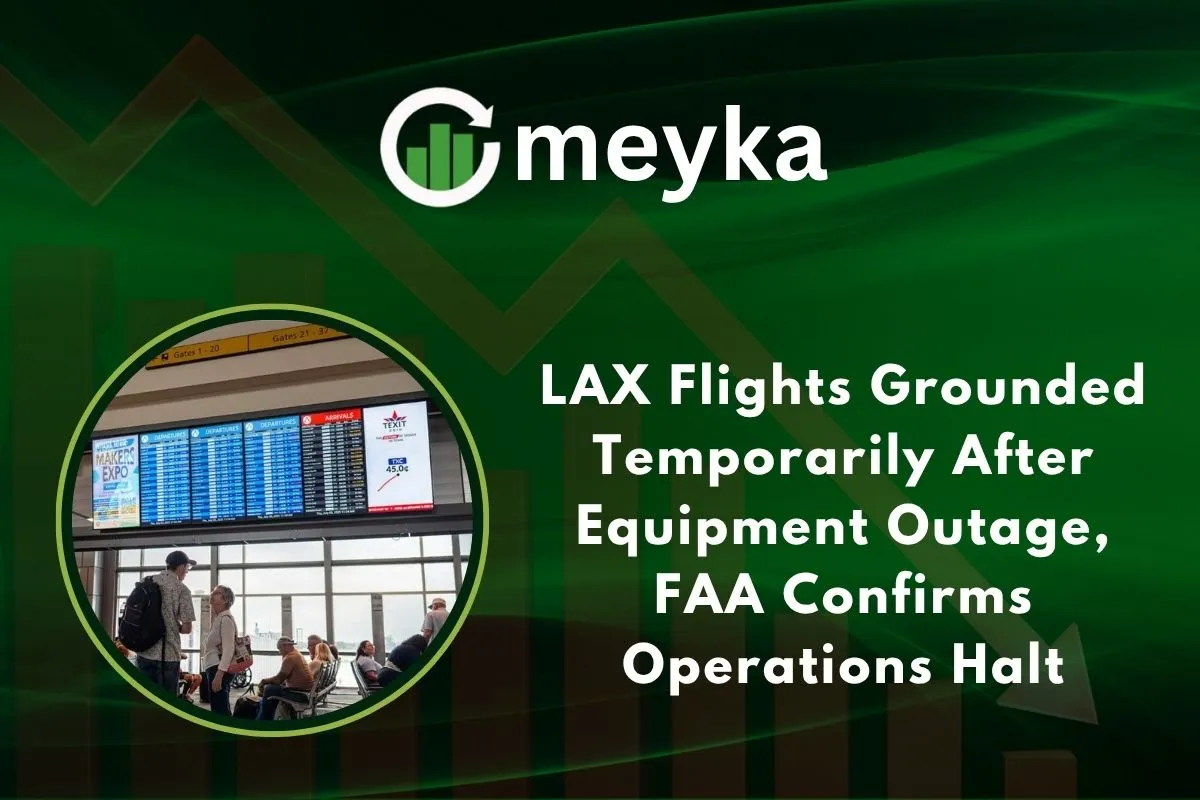LAX Flights Grounded Temporarily After Equipment Outage, FAA Confirms Operations Halt
On October 12, 2025, LAX flights were unexpectedly grounded. The FAA issued a ground stop at Los Angeles International Airport after an equipment outage disrupted operations. For a short time, neither departures nor arrivals could proceed. We saw travelers stuck, flights delayed, and urgent action from airport and federal staff. This incident shows how delicate modern air travel systems are, and how quickly things can spiral if one element fails.
What Caused the Equipment Outage?
Officials confirmed the outage without providing many technical details. They said an “equipment malfunction” affected air traffic control systems. Some reports suggest it hit ground control coordination. At this stage, we do not know which precise hardware or system failed: radar, communications, or data processing. Because LAX handles about 1,500 flights daily, even a small system glitch can cause wide disruption.
This is not the first time the U.S. aviation system has suffered from technical faults. In January 2023, for example, a failure in the FAA’s NOTAM system disrupted flights nationwide. That past event showed that even core systems have vulnerabilities.
Immediate Response by FAA and Airport Authorities
As soon as the outage occurred, the FAA activated a ground stop. This is a standard safety maneuver to halt aircraft movements until systems are safe. LAX’s control tower operations paused, and all incoming and outgoing flights were held or diverted.
Airport officials and FAA technicians immediately mobilized to diagnose the problem. They ran safety checks and isolated the fault zone. Communication lines were opened between the FAA, LAX management, and airlines. Once the issue was contained, they resumed operations in phases. In statements, the FAA pledged transparency and said safety would not be compromised while restoring operations.
Impact on Flights and Passengers
The fallout was immediate. Hundreds of flights across arrivals and departures were delayed or diverted. Major airlines like Delta, American, and United were among those affected. Passengers were left waiting in terminals, checking flight apps or lining up at counters. Some inbound flights circled while a decision was made whether to land. Others diverted to nearby airports. The ripple effect extended beyond LAX, connecting flights and schedules across the U.S. were disrupted.
Logistics also took a hit: airline crews had to be repositioned, ground services reallocated, and many flights rearranged. The economic cost is not trivial; lost fuel, rescheduling, delays, and customer care all stack up.
Airlines’ Contingency Measures
In a crisis like this, airlines rely on backup protocols. They began rerouting flights and holding spare slots at alternate airports. They also offered rebooking options to affected passengers. Communication was key; alerts through mobile apps, SMS, counters, and announcements kept travelers in the loop.
Some airlines deployed extra ground staff to assist those stranded. Teams worked overnight to salvage schedules. Many carriers also honored accommodations or refunds for disrupted passengers. Throughout, coordination with LAX and the FAA was essential to avoid chaos.
Status of Restoration and Resumed Operations
The outage was thankfully brief. Technical teams fixed the issue, and operations gradually resumed. The FAA confirmed that normal flight activity returned once system health was verified. Because many flights were delayed or canceled, a backlog persisted. Airlines worked through the queue. Some flights resumed immediately; others followed in phases. Authorities kept a close eye on system stability before fully reopening.
LAX and FAA continue to monitor the situation and will likely publish a detailed incident report in the coming days.
Broader Aviation and Safety Implications
This incident is a stark reminder: aviation depends heavily on technology. When systems fail, safety is the first and only priority. Backup systems and redundancy are not optional; they are essential. The FAA has strict protocols for handling outages, but this event highlights ongoing vulnerabilities. Some infrastructure in U.S. air traffic control is aging, and critics say modernization is overdue.
Experts warn that as airlines and airports become more digital and interconnected, system complexity grows, and so does the risk. A fault in one node can cascade across regions. The challenge now is not only to fix this incident but to learn from it and strengthen resilience.
What Happens Next?
Investigations are already underway. FAA and LAX will collaborate to trace the root cause: a hardware fault? Software bug? Communication failure? They may also examine past maintenance records and system logs. Upgrades are likely. More robust backups, better fault detection, redundant power paths, and faster failover mechanisms may be installed. Policies, too, could be revisited, how quickly to escalate, how to test fail-safes, and how to communicate with airlines.
Finally, public transparency is expected. Authorities will release after-action reports. Stakeholders will push for accountability and reform. For travelers, the lesson is to stay alert, check flight status, expect delays, and stay prepared.
Conclusion
The LAX flight grounding event on October 12 was brief but eye-opening. It exposed how fragile critical airport systems can be. The outage halted arrivals and departures, affected countless passengers, and tested the coordination among AA, LAX, and airlines.
As operations return to normal, the aviation community must not forget what happened. We must demand reliable systems, strong backups, clearer protocols, and proactive oversight. In a world that depends so heavily on air travel, safety and resilience should always come first.
FAQS:
LAX is the code for Los Angeles International Airport. The letters do not spell a phrase. Airports added an “X” when codes changed from two letters to three.
Yes, flights to LAX are operating again. The equipment problem was fixed, and the planes are moving normally. Travelers should still check updates from their airline before heading out.
Ground controllers manage planes while they taxi, park, or move toward runways. They work from the control tower and guide pilots using radio instructions for safety.
Disclaimer:
This content is for informational purposes only and is not financial advice. Always conduct your research.






